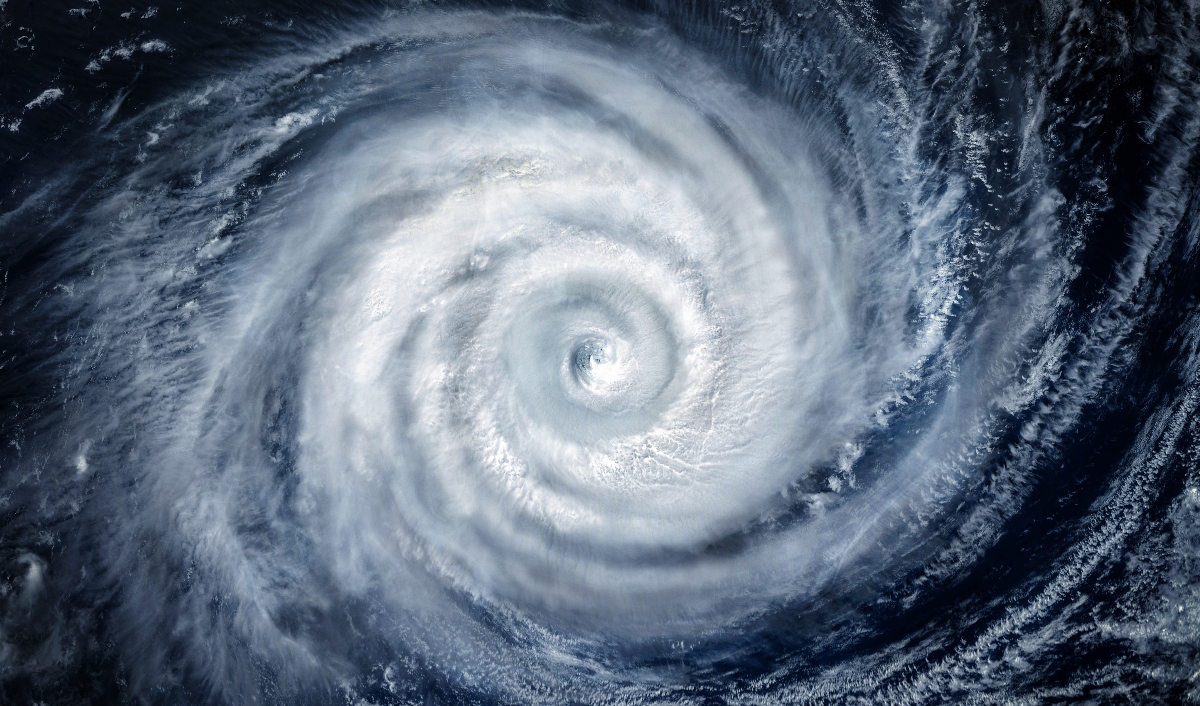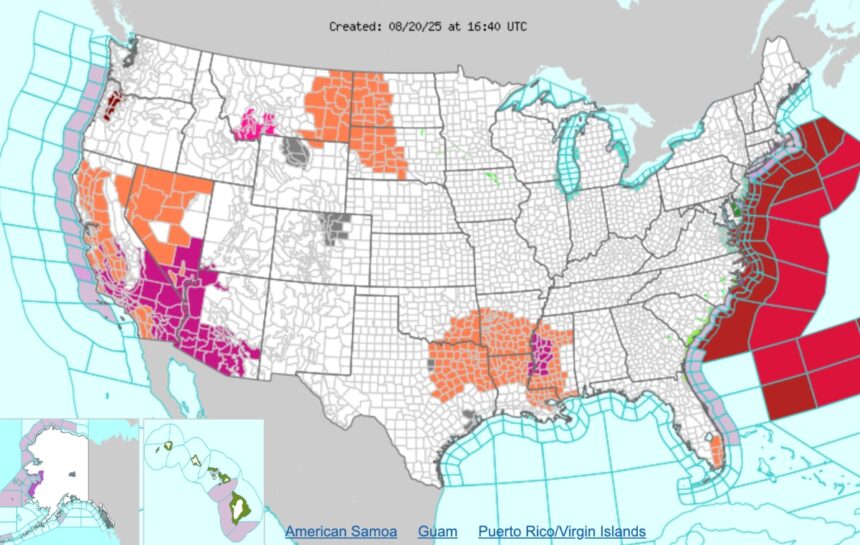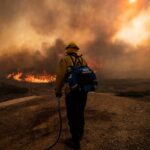The large Category 2 Hurricane Erin is advancing across the western Atlantic on Wednesday, threatening most of the U.S. East Coast with dangerous storm surge and rip currents, according to the U.S. National Hurricane Center (NHC).
The system was located Thursday morning about 400 miles (645 kilometers) southeast of Cape Hatteras, North Carolina, with maximum sustained winds of 100 miles (155 kilometers per hour), posing a serious threat to the U.S. East Coast.
Hurricane Erin alerts East Coast

The Miami-based federal agency stressed that Erin, a Category 2 hurricane on the Saffir-Simpson scale out of a total of 5, beaches along most of the U.S. East Coast will experience extremely dangerous conditions, with heavy surf and rip currents threatening the lives of swimmers and surfers.
Authorities urged people in coastal areas of North Carolina and Virginia to immediately follow evacuation orders and local safety measures in the face of what they describe as a potentially deadly storm surge and storm surge situation.
Forecasters warned that the cyclone’s outer bands will begin to deteriorate weather conditions in North Carolina beginning Thursday afternoon, with storm surges and strong currents posing a life-threatening threat.
A storm surge warning is currently in effect from Cape Lookout to Duck, North Carolina.
As well as a tropical storm warning between Beaufort Inlet and the Virginia border, including Pamlico Sound and Albemarle.
A tropical storm watch is also in effect further north to Chincoteague, Virginia, and Bermuda.
The eye of the hurricane was located about 900 kilometers (560 miles) west-southwest of Bermuda this morning.
Erin is moving north-northwest at 20 kilometers per hour (13 miles per hour), forecast to turn north and northeast between today and tomorrow, before accelerating into the northeast Atlantic on Friday.
Hurricane force winds extend up to 150 kilometers (90 miles) from the center.
Tropical storms reach up to 425 kilometers (265 miles).
Erin emerged as a storm last week near Cape Verde in Africa, where it left seven dead.
It became a hurricane on Friday, following the formation in the Atlantic of Cyclones Andrea, Barry, Dexter and Chantal, which was the first to make landfall this year in the U.S., where it caused two deaths in July in North Carolina.
The National Oceanic and Atmospheric Administration(NOAA) last week maintained its forecast for an “above normal” hurricane season.
This is due to the estimation of between 13 and 18 tropical storms, of which between five and nine could become hurricanes.
Hurricane Erin poses a serious threat to the East Coast of the United States
QueOnnda.com























